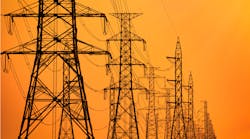Download this article in PDF format.
Last month, the White House announced that $3.5 billion would be allocated to 58 different projects across 44 states. All of those projects are focused on improving the nation’s electric grid, developing more clean energy, lowering costs and creating union jobs.
Funded by the Bipartisan Infrastructure Law, the projects will leverage more than $8 billion in federal and private investments to deliver affordable, clean electricity to all Americans. The funding will also help communities improve their grids and deal with extreme weather events.
These projects will help bring more than 35 gigawatts of new renewable energy online, invest in 400 microgrids, and maintain and create good-paying union jobs with three out of four projects partnering with the International Brotherhood of Electrical Workers (IBEW), the U.S. Department of Energy (DOE) announced in a press release.
“Extreme weather events fueled by climate change will continue to strain the nation’s aging transmission systems, but President Biden’s Investing in America agenda will ensure America’s power grid can provide reliable, affordable power,” said U.S Secretary of Energy Jennifer M. Granholm, in the release.
“Today’s announcement represents the largest-ever direct investment in critical grid infrastructure, supporting projects that will harden systems, improve energy reliability and affordability—all while generating union jobs for highly skilled workers,” Granholm continued.
Where Will the Money Go?
The DOE says it selected projects for this funding round based on the proposed projects’ ability to maintain and create good-paying union jobs. Some of the larger projects slated to receive their share of the $3.5 billion include the following:
- The Georgia Environmental Finance Authority and the Family of Companies that supports the Georgia electric cooperatives will collaborate on a project to benefit communities across the state through increased reliability and lower costs with an estimated investment of more than $507 million. The project will make a comprehensive smart grid infrastructure update through investments in battery storage, local microgrids and grid reliability, as well as new transmission lines.
- Two Louisiana projects will focus on better positioning disadvantaged communities to withstand extreme weather. The state will launch a strategic initiative with 15 government entities, energy companies and community and academic institutions to enhance statewide emergency response operations by deploying a network of Community Resilience Hubs powered by distributed energy resources microgrids.
- In Michigan, DTE Energy will deploy adaptive networked microgrids, which can adapt to changing energy demand and supply conditions in real-time, especially after extreme weather events. The microgrids will rely on new grid sensing and fault location devices and communication tools that will enhance reliability and reduce the number and total duration of outages in the microgrid areas.
- In Pennsylvania, PECO Energy Company will increase grid reliability and resilience through substation flood mitigation, upgrading underground monitoring and control technologies, deploying battery systems for backup power, replacing aging infrastructure and installing advanced conductors to increase grid capacity.
- And in Oregon, the Confederated Tribes of Warm Springs Reservation of Oregon and Portland General Electric (PGE) will upgrade transmission capacity and connect PGE customers with the currently isolated renewable resources east of the Cascade Mountains, including those on the Warm Springs Reservation—building a bridge of up to 1,800 MW of carbon-free solar resources.
A Grid in Sore Need of an Upgrade
This new round of federal funding will be joined with $4.7 billion in investments from the private sector, bringing the total amount of catalyzed investment into the grid to over $8 billion.
The funds are sorely needed according to CNBC, which reports that more than half of the nation’s transmission lines and power transformers were installed before 1970 and the aging electric grid has been getting hard hit by increasingly extreme weather patterns brought on by climate change.
″Every time you turn on a light, charge your laptop, plug in an air conditioner or put leftovers in the fridge,” said White House Infrastructure Implementation Coordinator Mitch Landrieu on a recent call with reporters, “you rely on the electric grid, and that grid has been in need of an upgrade for a very, very long period of time.”









